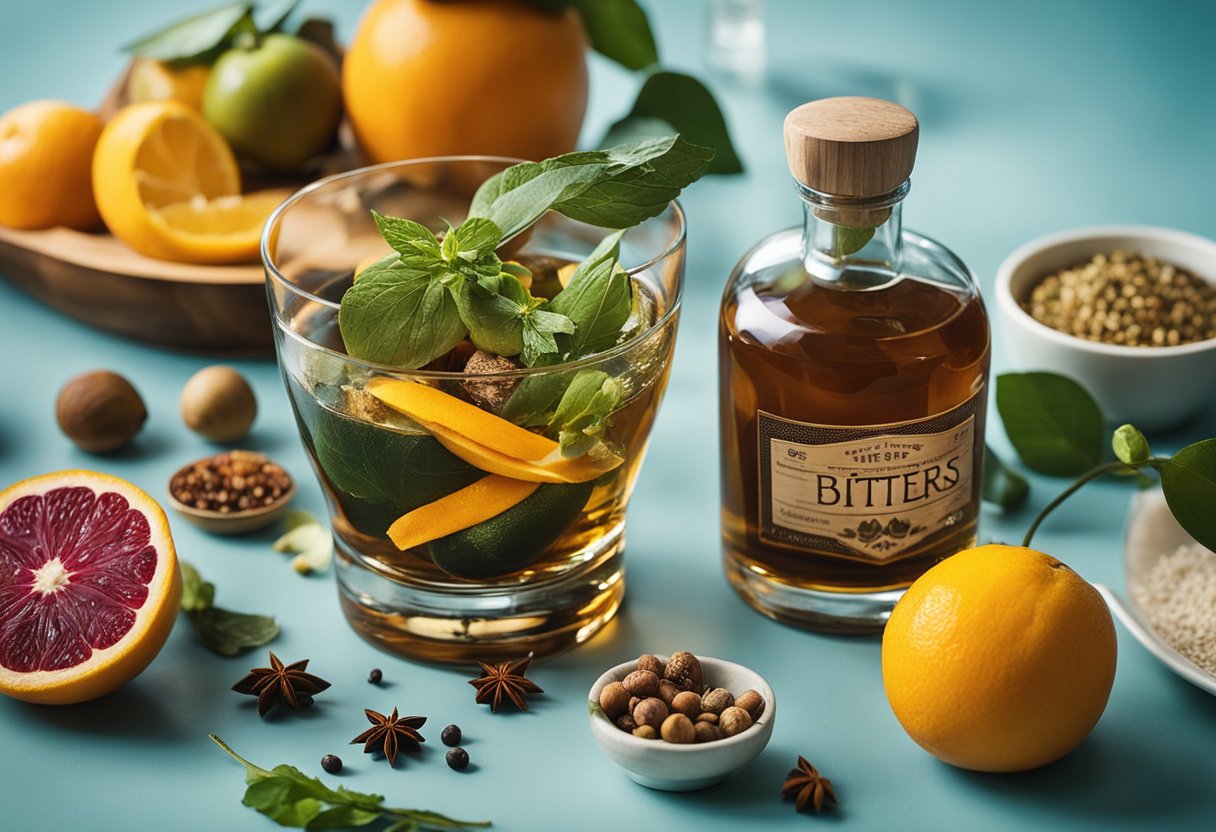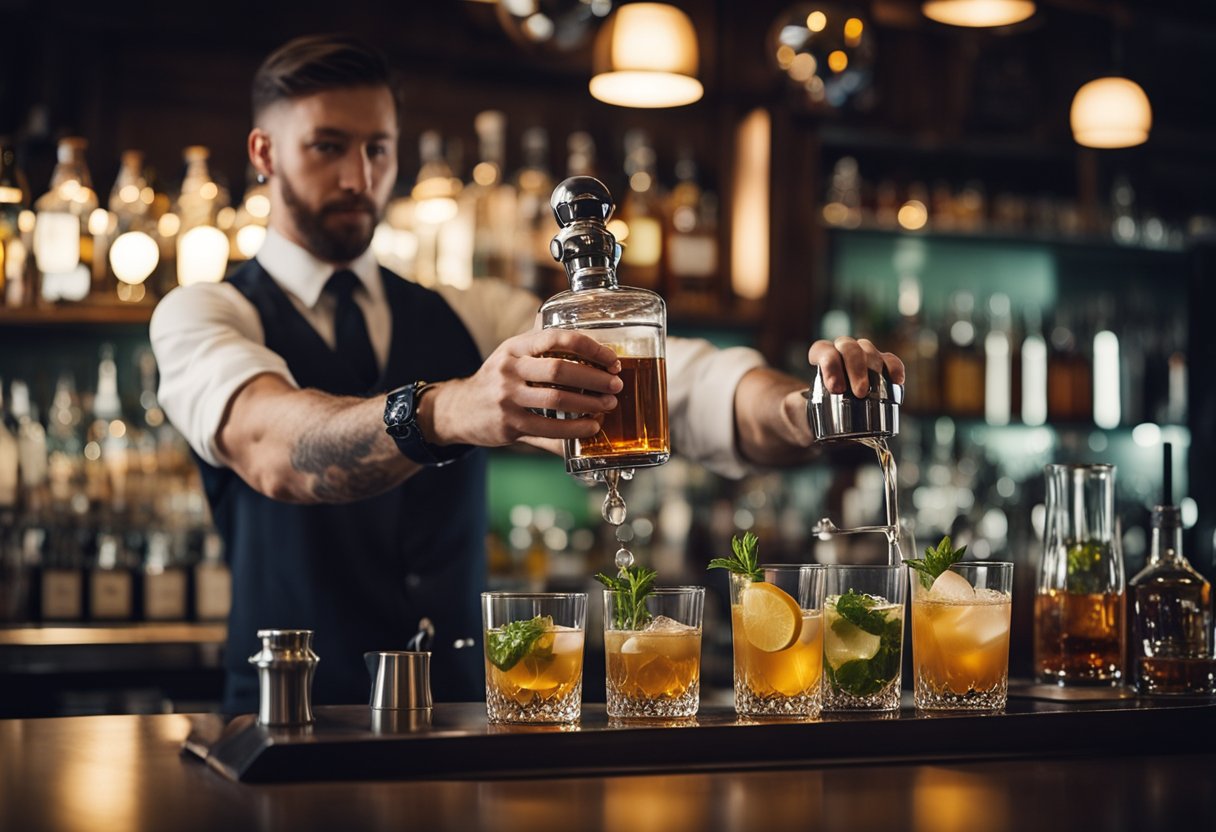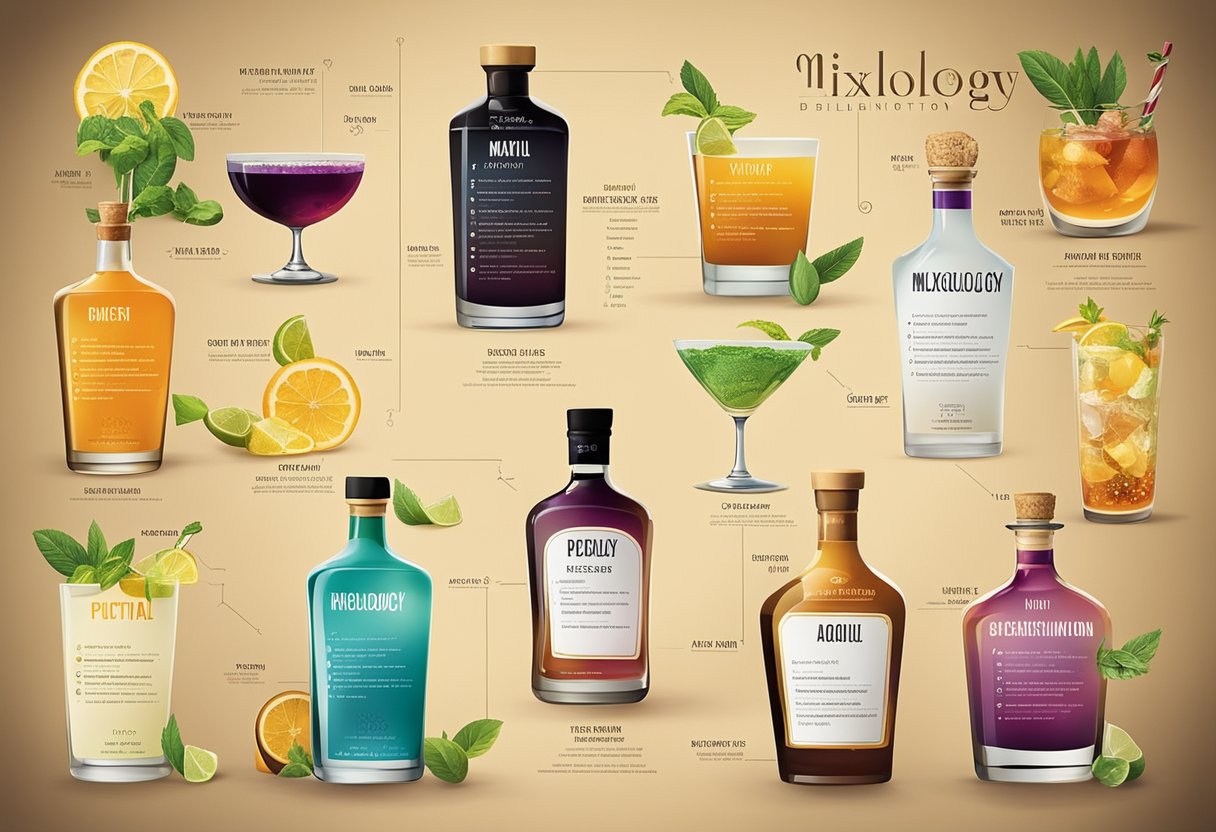Bitters and Beyond: A Comical Guide to Deciphering Cocktail Ingredients
Well, well, well, it looks like you’ve stumbled upon the fascinating world of cocktail ingredients! As a self-proclaimed cocktail connoisseur, I’m excited to share with you the ins and outs of one of my favorite components: bitters.

Now, before you roll your eyes and assume that bitters are just another trendy ingredient, let me assure you that these little drops of magic have been around for centuries. From the classic Old Fashioned to the trendy Negroni, bitters are a staple in many of our favorite cocktails. But what exactly are they? And how do they work their magic in our drinks? Fear not, my friend, we’ll get to the bottom of it all.
But wait, there’s more! While bitters may be the star of the show, they’re certainly not the only ingredient worth exploring. From fresh herbs to unique syrups, the world of cocktail ingredients is vast and exciting. So, grab your shaker and let’s dive in together!
The Bitter Truth: A Spirited Journey

As a cocktail enthusiast, I’m always on the lookout for new and interesting ingredients to add to my home bar. And when it comes to adding depth and complexity to a drink, bitters are an absolute must-have.
Bitters: A Dash of History
Bitters have been around for centuries, originally used as medicinal tonics to aid digestion and cure ailments. But as people began to realize the flavor-enhancing properties of these potent elixirs, they started incorporating them into their cocktails.
One of the most famous bitters brands, Angostura, was invented in Venezuela in the early 1800s by a German doctor named Johann Siegert. He created the formula as a cure for stomach ailments, but it quickly became popular as a cocktail ingredient.
Types of Bitters and Their Uses
There are countless varieties of bitters available today, each with its own unique flavor profile and intended use. Here are a few of the most common types:
-
Aromatic bitters: These are the classic bitters that most people are familiar with. They’re made with a blend of herbs and spices, and add a complex, slightly bitter flavor to cocktails like the Old Fashioned and Manhattan.
-
Citrus bitters: As the name suggests, these bitters are made with citrus peels and add a bright, zesty flavor to cocktails like the Margarita and Sidecar.
-
Herbal bitters: Made with ingredients like chamomile, lavender, and thyme, these bitters add a subtle, earthy flavor to cocktails like the Negroni and Martini.
-
Spicy bitters: If you’re a fan of heat, these bitters are for you. Made with ingredients like chili peppers and ginger, they add a spicy kick to cocktails like the Moscow Mule and Bloody Mary.
Navigating the Flavor Galaxy
With so many different types of bitters available, it can be overwhelming to know where to start. My advice? Experiment! Try different bitters in your favorite cocktails and see how they change the flavor profile. And don’t be afraid to mix and match – some of the best cocktails are the result of happy accidents.
So next time you’re mixing up a drink, don’t forget to add a dash of bitters. It just might be the missing ingredient that takes your cocktail to the next level.
Shaken or Stirred: Crafting the Perfect Cocktail

As a self-proclaimed cocktail enthusiast, I have spent countless hours perfecting my craft. Whether you prefer your drink shaken or stirred, there are a few essential ingredients and techniques that every mixologist should know.
Essential Cocktail Ingredients
The key to any great cocktail is using quality ingredients. Here are a few staples that every home bar should have:
| Ingredient | Description |
|---|---|
| Liquor | Choose your favorite spirits, such as vodka, gin, or whiskey. |
| Mixers | These include soda, tonic, juice, and bitters. |
| Ice | Use ice cubes, crushed ice, or ice balls to chill your drink. |
| Garnishes | These add flavor and visual appeal to your cocktail. Popular options include citrus wedges, olives, and herbs. |
Mixology 101: Techniques and Tools
Once you have your ingredients, it’s time to start mixing. Here are a few techniques and tools that will help you craft the perfect cocktail:
-
Shaking: This method is used for drinks that contain juice or cream. Fill a cocktail shaker with ice and your ingredients, then shake vigorously for 10-15 seconds.
-
Stirring: This method is used for drinks that are all alcohol, such as a martini. Fill a mixing glass with ice and your ingredients, then stir for 20-30 seconds.
-
Straining: After shaking or stirring, use a strainer to remove any ice or pulp from your drink.
-
Jigger: This tool helps you measure your ingredients accurately. A standard jigger is 1.5 ounces on one side and 1 ounce on the other.
The Art of Garnishing
Garnishes not only add flavor to your drink, but they also make it look more appealing. Here are a few popular options:
-
Citrus wedges: Add a slice of lemon, lime, or orange to your drink for a burst of flavor.
-
Olives: A classic garnish for a martini, olives add a salty and savory element to your drink.
-
Herbs: Mint, basil, and rosemary are all great options for adding a fresh, herbal note to your cocktail.
In conclusion, crafting the perfect cocktail takes time and practice, but with the right ingredients, techniques, and garnishes, you’ll be mixing up drinks like a pro in no time. Cheers!
Frequently Asked Questions

Why do bartenders whisper sweet nothings to a bottle of Angostura?
Well, Angostura is a special type of bitters that has been around since the early 19th century. It’s a bit of a tradition for bartenders to give the bottle a gentle shake and a whisper before using it in a cocktail. Some say it’s to wake up the flavors, while others believe it’s to show respect for the history of the brand. Either way, it’s a fun little ritual that adds to the magic of cocktail making.
Can a cocktail have an existential crisis without bitters?
Existential crisis? That’s a bit dramatic, don’t you think? But in all seriousness, bitters are an essential ingredient in many classic cocktails. They add depth, complexity, and balance to a drink. Without bitters, a cocktail can feel flat and one-dimensional. So, while a cocktail may not have an existential crisis without bitters, it certainly won’t be as interesting or delicious.
Are bitters the fairy dust of the cocktail world?
Ha! I love that description. Bitters certainly have a magical quality to them. Just a few drops can transform a cocktail from ordinary to extraordinary. They’re like the seasoning in a dish – a little goes a long way, but it can make all the difference. So, in a way, you could say that bitters are the fairy dust of the cocktail world.
What’s the magical potion count in a dash of bitters?
Ah, the age-old question. Unfortunately, there’s no one answer to this. The number of drops in a dash can vary depending on the brand and the size of the bottle. Some bitters bottles have a built-in dasher top, while others require you to use a dropper. As a general rule of thumb, a dash is usually around 1/8th of a teaspoon. But really, it’s up to you to decide how much you want to use based on your personal taste preferences.
If a cocktail is a symphony, are bitters the conductor?
I like where your head’s at. Bitters certainly play an important role in a cocktail, but I wouldn’t say they’re the conductor. Rather, they’re more like the bassline or the percussion – they provide a foundation for the other flavors to build upon. A well-made cocktail is like a symphony, with each ingredient playing its part to create a harmonious whole.
How many bitters does it take to get to the center of a cocktail’s soul?
Haha, now you’re just being silly. There’s no magic number when it comes to bitters – it all depends on the recipe and your personal taste preferences. But I will say this – bitters are an essential ingredient in many classic cocktails, and they’re definitely worth experimenting with if you want to take your mixology skills to the next level.